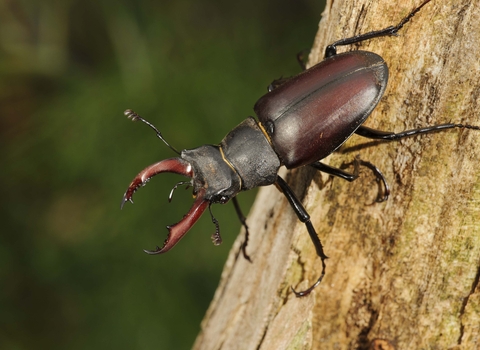
Stag Beetle ©Terry Whittaker/2020VISION
Stag beetle
Famous for its fearsome jaws, the stag beetle does not have the bite to match. Look for it in woods, parks and gardens in South East England in summer. Males display their massive jaws to attract females and duel with their rivals.
Scientific name
Lucanus cervusWhen to see
May to AugustSpecies information
Category
Statistics
Length: 5.0-7.5cmProtected in the UK under the Wildlife and Countryside Act, 1981. Priority Species under the UK Post-2010 Biodiversity Framework.
